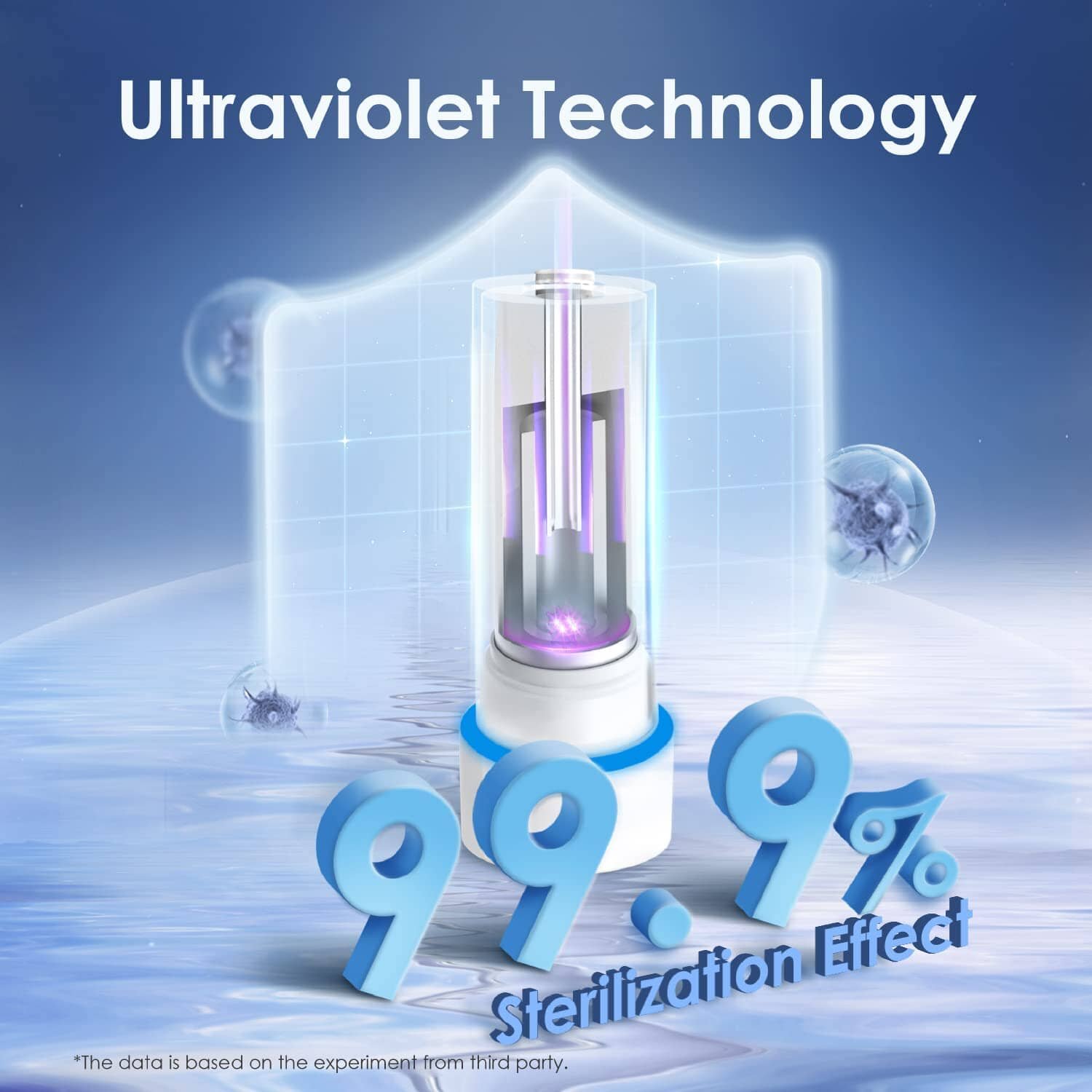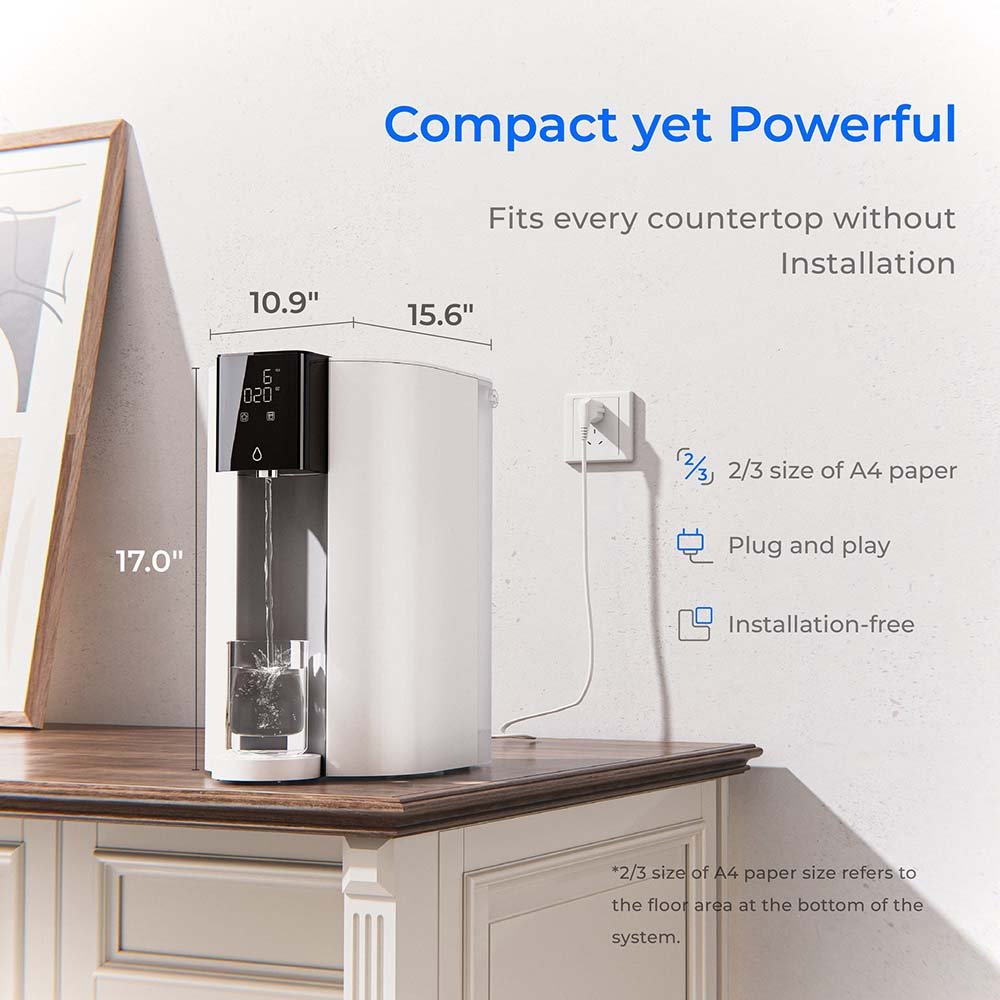Fluoride, a mineral found in water, is a double-edged sword. Naturally occurring in some water sources and artificially added in others for dental health, fluoride’s presence in our drinking water has sparked a health debate. High levels can cause issues like dental fluorosis, making the removal of excess fluoride crucial.
Among the various methods for addressing this concern, Reverse Osmosis (RO) systems have emerged as a popular and effective solution. This article dives into why managing fluoride levels in your drinking water is not just a matter of taste, but of health, and how the RO system can play a vital role in this process.

Understanding Fluoride in Water
Fluoride in water is a topic layered with complexities. Its natural occurrence comes from rocks and soil, seeping into groundwater and surface waters. In some regions, fluoride levels in natural water sources can exceed recommended limits, leading to potential health risks. Meanwhile, artificial fluoridation of water supplies has been a public health measure for decades, aimed at reducing dental cavities.
However, the effects of fluoride on health are multifaceted. While low to moderate levels of fluoride support dental health by strengthening tooth enamel and reducing decay, excessive fluoride exposure can have detrimental effects. One of the most visible signs of excessive fluoride intake is dental fluorosis, a condition marked by changes in the appearance of tooth enamel in young children during tooth development. In more severe cases, skeletal fluorosis can occur, leading to pain and damage to bones and joints.
Regulatory agencies have set standards for fluoride levels in drinking water to balance these risks and benefits. The World Health Organization (WHO), for example, recommends a fluoride concentration of 0.5 to 1.5 mg/l (milligrams per liter) in drinking water. Understanding these standards and the fluoride levels in your local water supply is crucial in making informed decisions about water consumption and filtration needs.
Types of Water Filtration Systems for Fluoride Removal
In response to these concerns about fluoride in drinking water, many homeowners are turning to water filtration system for home use. These systems range from simple pitchers equipped with filters to sophisticated whole-house solutions, each designed to reduce or eliminate unwanted fluoride levels, ensuring safer and healthier drinking water. Enhancing and elaborating on the provided content about water filtration systems for fluoride removal:
- Reverse Osmosis (RO) Systems
- Activated Alumina Filters
- Bone Char Carbon Filters
- Ion Exchange Filters
- Distillation
Reverse Osmosis Systems
Reverse Osmosis systems are a pinnacle of water purification technology, particularly adept at reducing fluoride levels. The heart of an RO system is its semi-permeable membrane, designed to allow only water molecules to pass through while trapping contaminants, including fluoride. This precision filtration makes RO systems incredibly efficient, often reducing more than 90% of fluoride present in water.
Removal of Beneficial Minerals
While the effectiveness of RO systems in contaminant removal is unquestionable, it’s important to note that they don’t discriminate between harmful and beneficial minerals. This means essential minerals like calcium and magnesium, which contribute to the taste and health benefits of water, are also removed. The result is purified water that’s very clean but may lack these beneficial minerals.
Water and Energy Intensity
RO systems can be water-intensive. They produce a certain amount of wastewater, known as brine, containing the concentrated contaminants removed from the water. This means that for every gallon of purified water, a certain amount of wastewater is also produced, which can be a consideration in areas where water conservation is a priority. Additionally, these systems can require significant energy to operate, especially for larger systems designed for high-volume filtration.
Maintenance and Longevity
Maintenance is a crucial aspect of RO systems. The membrane and filters require regular replacement to maintain efficiency and prevent clogging. The lifespan of the membrane can vary based on the quality of the input water and the frequency of use, necessitating occasional investment in replacement parts.
Choosing the Right System
When opting for an RO system, it’s important to consider the specific needs of your household. Factors like the initial installation cost, ongoing maintenance requirements, water output needs, and the quality of your existing water supply should influence your decision. In some cases, additional systems, such as mineral filters or remineralization stages, can be added to RO systems to reintroduce essential minerals, balancing the purity of filtration with the health benefits of these minerals.
Activated Alumina Filters
Activated Alumina Filters harness the chemical properties of aluminum oxide to effectively combat fluoride and arsenic in water. The process, known as adsorption, involves the fluoride ions binding to the surface of the alumina particles. This method is particularly noted for its high efficiency, often being able to reduce fluoride levels by up to 95%.
Refinement and Limitations
The precision of activated alumina filters in targeting specific contaminants like fluoride and arsenic is a key strength. However, this system’s effectiveness is closely tied to the pH levels of the water. Water with a high or low pH can affect the adsorption process, potentially reducing the filter’s efficiency. Regular maintenance is also crucial to sustain its performance. Over time, the alumina media becomes saturated with contaminants and needs replacement to ensure continued efficacy.
Application and Suitability
Activated alumina filters are versatile, suitable for both residential and industrial applications. They are often used in areas where water naturally contains high levels of fluoride. For users concerned about specific contaminants like fluoride and arsenic, these filters offer a targeted and effective solution.
Bone Char Filters
Bone Char Carbon Filters utilize a unique material—charred animal bones—for water filtration. This material is particularly adept at removing fluoride, heavy metals, and other impurities from water, making it a versatile and effective choice for water purification.
Efficiency and Environmental Consideration
These filters are known for their high efficiency in fluoride removal, often comparable to more advanced technologies. Bone char can reduce fluoride levels by 90-95%. Additionally, these filters are considered environmentally friendly due to the sustainable sourcing of the bone char material.
Cultural and Maintenance Aspects
An important consideration for some users is the origin of the bone char material, which may not align with vegetarian or vegan lifestyles. Moreover, like many filtration systems, bone char filters require regular maintenance. The longevity and efficiency of the filter depend on the water quality and the frequency of use, necessitating periodic replacement of the bone char media.
Cost-Effectiveness
One of the appealing aspects of bone char filters is their cost-effectiveness. They offer a more affordable option compared to some advanced filtration systems, making them accessible for a wider range of users. Especially in regions with naturally high fluoride levels, bone char filters provide an efficient and economical solution for water purification.
Ion Exchange Filters
Ion Exchange Filters are a specialized solution for fluoride removal in water. These filters operate on a unique principle, where fluoride ions in the water are exchanged with other ions, typically chloride or bicarbonate. This ion exchange process is highly effective at reducing fluoride levels.
Effectiveness and Maintenance
One of the key advantages of ion exchange filters is their effectiveness in targeting and removing fluoride. They are known for their relatively low maintenance requirements, making them a practical choice for both residential and commercial use. However, it’s important to regularly monitor and replace the ion exchange media to ensure consistent water quality.
Considerations for Water Composition
A notable consideration with ion exchange filters is the potential alteration in the water’s sodium content. This is particularly important for individuals on a sodium-restricted diet or for those concerned about the overall mineral balance in their water. In such cases, users may need to look for alternatives or additional treatment methods to balance the water’s mineral content.
Distillation
Distillation stands out as one of the oldest and most effective methods for water purification, including fluoride removal. The process involves boiling water to produce steam, which is then cooled and condensed back into liquid form. This phase change effectively leaves behind fluoride and other contaminants.
Energy and Time Considerations
While distillation is highly effective in removing a wide range of contaminants, it is also recognized for being energy-intensive and time-consuming. The process requires a significant amount of heat to boil the water and then cool the steam, which can be a drawback in terms of energy consumption and operational efficiency.
Purity and Mineral Content
A significant benefit of distillation is the high purity level of the resulting water. However, similar to reverse osmosis, distillation also removes beneficial minerals, which can affect the taste and nutritional value of the water. Users might consider supplementing their diet with minerals or using additional water treatment methods to reintroduce essential minerals.
Each of these systems has its unique advantages and drawbacks. The choice largely depends on individual needs, the specific fluoride levels in your water, and other considerations like maintenance requirements, initial cost, and environmental impact. It’s also essential to consider whether the system removes other contaminants you may be concerned about.
Conclusion
The choice of a water filtration system for fluoride removal should be based on individual needs, water quality, and other specific circumstances. Factors like efficiency, maintenance requirements, cost, and environmental impact play a crucial role in deciding the most suitable system. By understanding the nuances of each system, you can ensure that your drinking water is not only safe and fluoride-free but also aligns with your health and lifestyle preferences.













